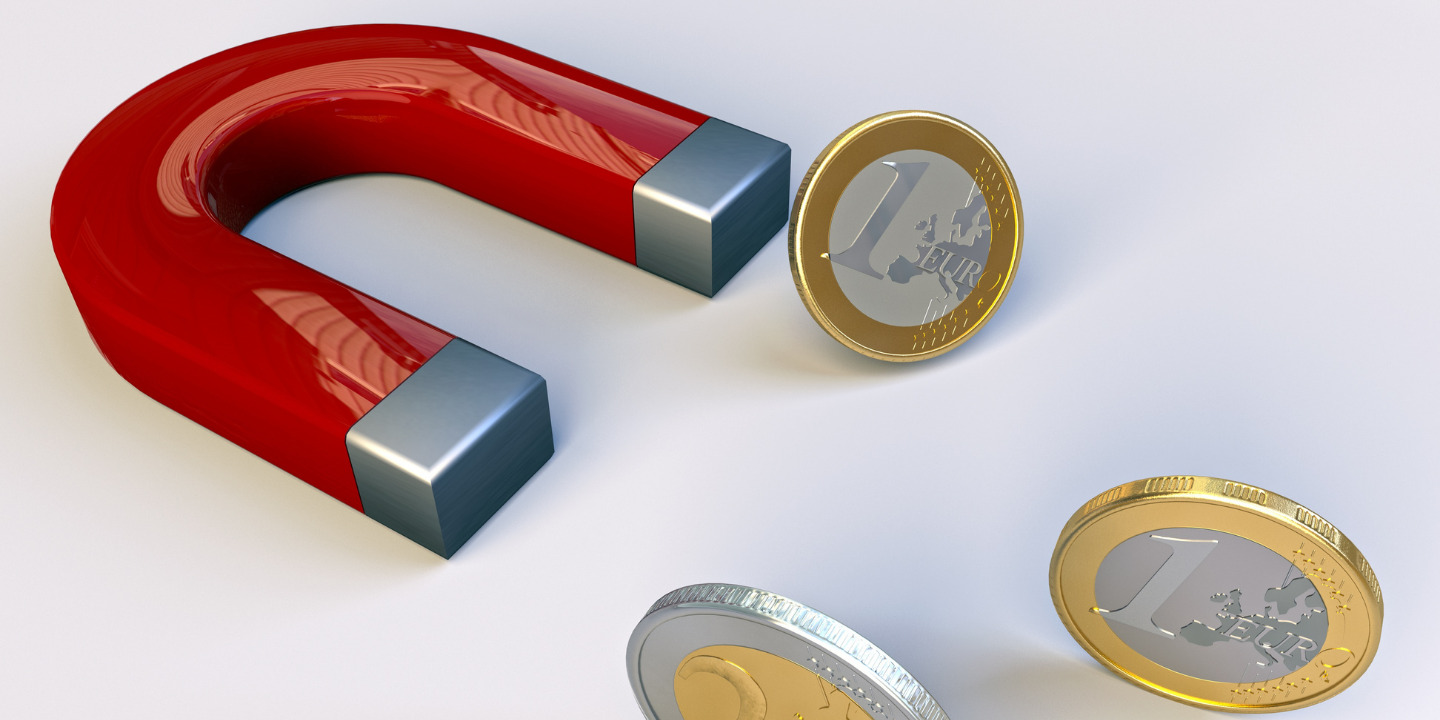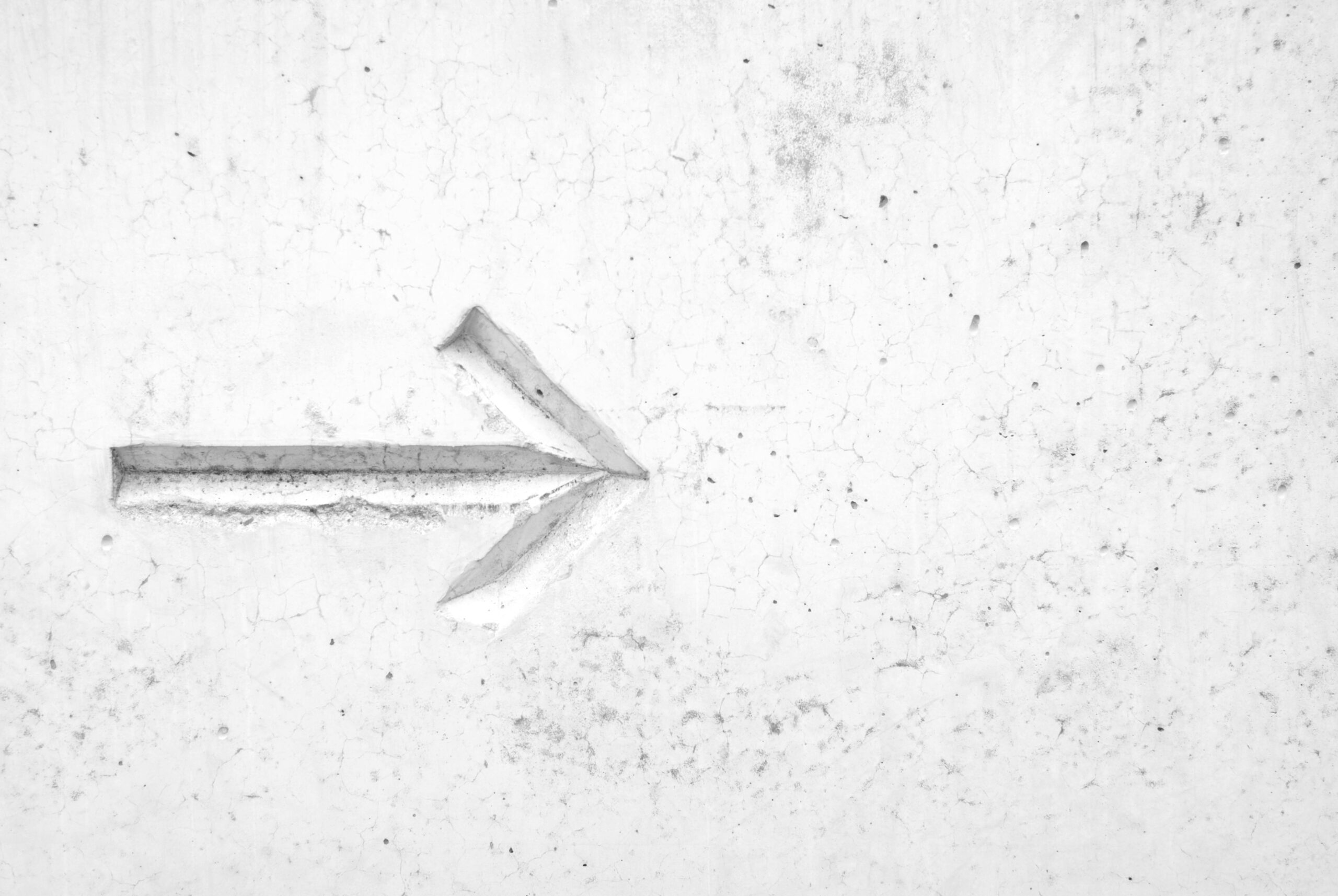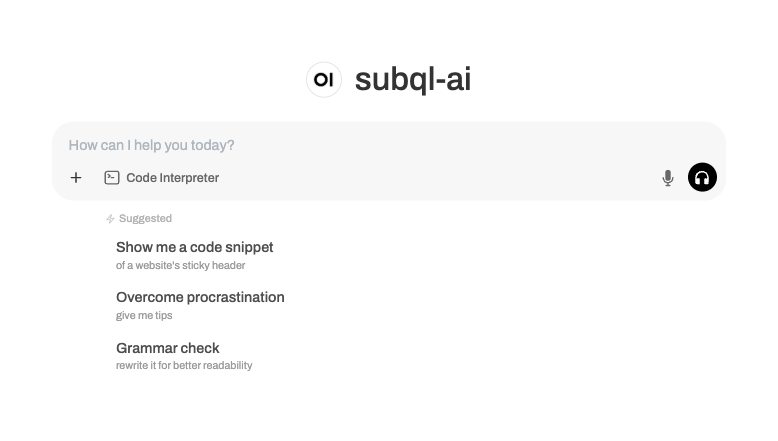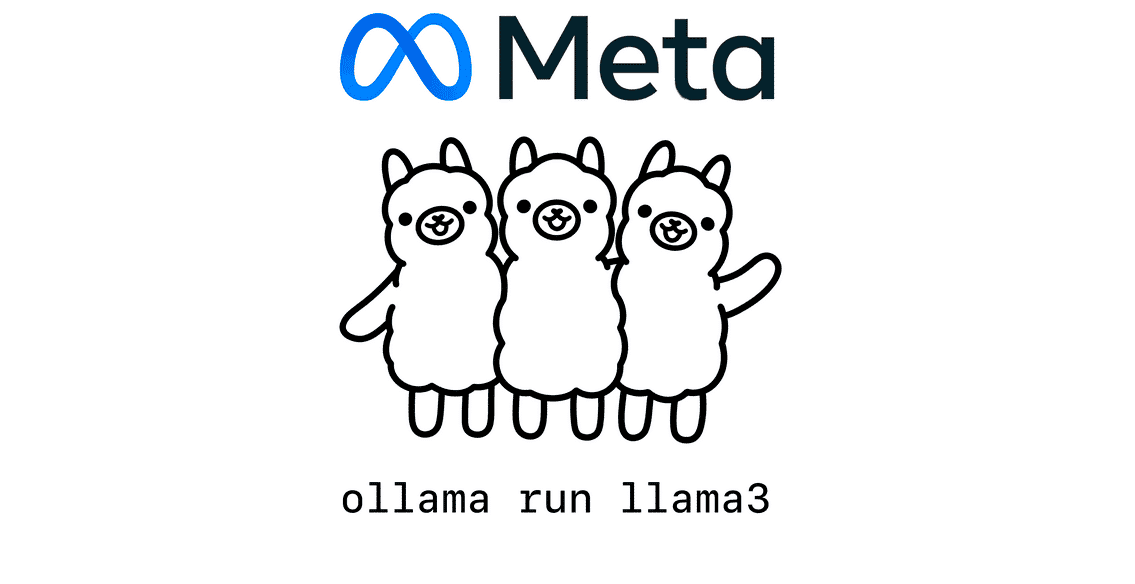Want To Do Hip Thrusts But Don’t Have a Barbell? Build Strength at Home With These 5 Alternatives
Your glutes have entered the chat.
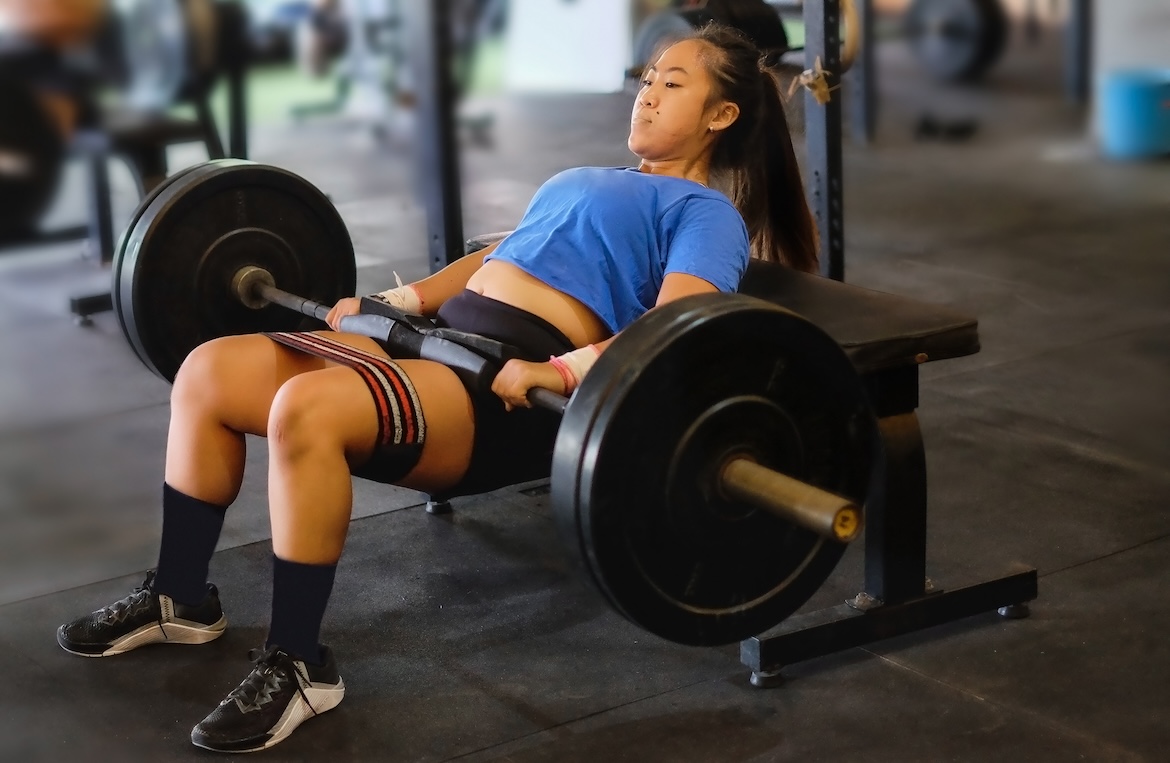
Hip thrusts are a go-to for glute building, but they aren’t the only exercise that can help you get gains in your upper legs and booty.
In fact, while the hip thrust is one of the more well-known glute exercises, it’s not even necessarily the most effective. And, because it requires a barbell, it’s also not the most practical—especially for anyone who prefers to work out at home.
We reached out to certified personal trainer Rachel MacPherson, CPT, for a deeper look into the exercise—and some hip thrust alternatives to try if you’re looking to mix up your lower-body workouts.
What is a barbell hip thrust?
The barbell hip thrust is a strength exercise that focuses on your gluteus maximus (the largest muscle in your backside), but it also targets your hamstrings and adductors.
Hip thrusts are a great option when you’re looking to strengthen your posterior chain—which is the entire backside of your body, from your heels all the way up to your head—according to MacPherson.
“The front of the body typically gets more attention in training routines because they are what you see in the mirror, and the posterior chain is often overlooked, though glute training has definitely grown in popularity over the last decade or so,” MacPherson says. “Posterior chain muscles aid in maintaining balance, spinal, pelvis, and knee stability, posture, and athletic performance.”
How to a barbell hip thrust with perfect form
You’ll need an elevated surface, like a gym bench or box, set to about 16 inches high to rest your upper back on. Place a barbell over your hips using a barbell sleeve or pad to avoid pain and bruising.
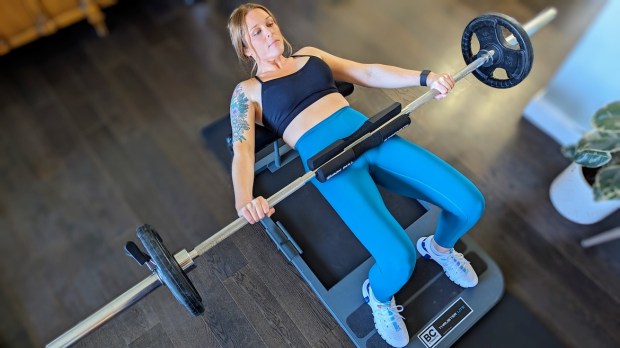
- Sit on the ground next to a barbell with your mid back against the edge of a bench or box. The edge should hit you just below your shoulder blades.
- Bend your legs about 90 degrees and place your feet flat on the floor about hip-width apart.
- Roll the barbell over your legs until it’s sitting on the crease of your hips.
- Brace your core, tuck your chin slightly, and push through your heels to lift your hips up toward the ceiling. At the top of the movement, you should be in a straight line from your shoulders to your knees.
- At the top of the lift, really squeeze your glutes—this is the main benefit of the movement, so contract and feel your glute muscles working.
- Lower your hips back down slowly and with control to the starting position.
Keep your chin tucked and ribs down throughout the move to maintain a neutral spine and prevent you from overextending at your neck. Make sure to extend your hips fully at the top of the movement to get that peak glute activation. Think about tucking your tailbone under as you lock out.
Benefits of the barbell hip thrust
1. It directly targets your glutes
“Barbell hip thrusts are a direct glute exercise, and there aren’t too many of those because most lower-body movements incorporate your quads and hamstrings quite a lot,” MacPherson says. (Of course, you do still employ some additional muscles, but this move is heavily focused on the glutes.)
2. It activates inactive glutes
“Some people haven’t had success using squats because they can’t feel their glutes very well,” MacPherson says. “Inactive glutes can happen from spending a lot of time sitting and not using your glutes enough, so they essentially shut off, and other muscles start to compensate, which leads to muscular imbalances and dysfunction, and eventually pain.”
3. It prevents pain in daily life
The thrusting movement involves hip extension and external rotation, which, in turn, strengthens these muscles. These muscles are some of the most common to cause pain or injuries that people tend to get from running or even just daily activity if their glutes have become inactive, according to MacPherson.
4. It improves your mind-muscle connection with your glutes
“Hip thrusts have a peak contraction and slow lowering phase, which helps you get really focused and in tune with your glutes,” MacPherson says. She notes that this mentality helps you go into all of your other glute exercises with more connection and therefore yields better results.
5. It reduces your risk of injury
“Gluteal muscle function is super important for stabilizing the knees, pelvis, and trunk,” MacPherson says. “Strong glutes will mean fewer chances of pain, injury, and dysfunction in your hips, pelvis, knees, and back.”
Are there downsides to the barbell hip thrust?
While the barbell hip thrust can be a useful exercise, there are some downsides that are worth noting.
“Hip thrusts are a huge pain to set up because you need a solid bench that won’t move, bumper plates to fit your legs beneath the bar, a lot of weight to challenge such a large muscle group, and a bar pad so you don’t bruise your pelvis,” MacPherson says.
It’s not just the equipment you should be wary of, but that the maximum load on your glutes occurs at peak contraction as opposed to in the stretched position. This means you may not see as much muscle growth as you would in an exercise where the max load is on a stretched muscle, MacPherson says.
If you’re going to include hip thrusts into your glute workouts, MacPherson recommends including exercises like lunges that give a better muscle stretch and have more muscle growth potential.
Barbell hip thrust muscles worked
This move primarily targets your gluteus maximus, which is actually made up of two parts: the upper and lower gluteus maximus. Another hip thrust muscle worked includes your biceps femoris, though less directly than your gluteus maximus.
Best barbell hip thrust alternatives
Don’t have a barbell at home? Macpherson suggests trying out the following exercises that work the same muscles.
1. Single-leg hip thrust with pulse
Using a single leg variation and including a pulse helps you work the same muscles with less load and provides an extra contraction stimulus for every rep due to the pulse. This variation can also be done using a mini band looped around your legs, just above your knees, or even placing a kettlebell or dumbbell on your pelvis for more load.
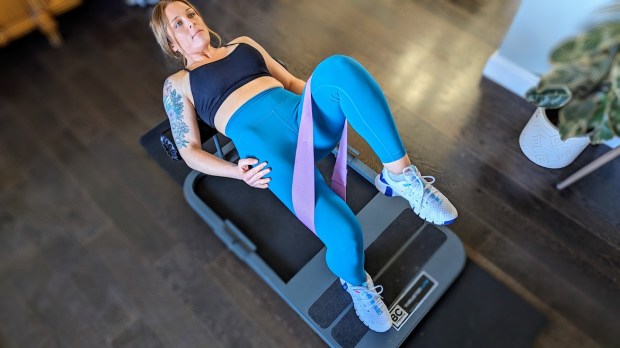
- Sit on the ground with your mid back against the edge of a bench or box. The edge should hit you just below your shoulder blades.
- If using a mini band, loop it around your legs just above your knees. If using a weight, hold it atop your pelvis.
- Bend your legs about 90 degrees and place your feet flat on the floor about hip-width apart.
- Brace your core, tuck your chin slightly, and lift your left knee toward your chest, raising your foot from the ground. Drive your right heel into the floor, elevating your hips while engaging your glutes and hamstrings.
- At the top of the lift, really squeeze your glutes—this is the main benefit of the movement, so contract and feel your glute muscles working.
- Lower your hips slightly, hold, then press up as high as possible before returning to the starting position.
- Repeat on other side.
Make sure your glutes, hamstrings, and core are engaged, and focus on the muscles you are using. The hip flexor muscles of your supporting leg will also be active while helping you stay stable, so press that foot into the floor and contract the stationary glute for support. Keep your upper back fixed, isolating the movement to your hips, and ensure one hip stays above the other throughout the exercise. A higher rep range of 10 to 20 or so is ideal for this movement.
2. Side plank clamshell with hip thrust
This hip thrust variation targets your abductors (the muscles that move your thigh away from your midline), which are otherwise known as your side butt, and builds hip rotator strength.
Working in this frontal plane of motion works the sides of your glutes and hips. It includes a hip hinge and hip extension to really strengthen your glutes.
A huge benefit of this movement is that it really helps tackle knee pain because weak hips are the primary cause of many knee issues, especially weak hip abductors and external hip rotators, which facilitate knee movements and keep the knee stable.
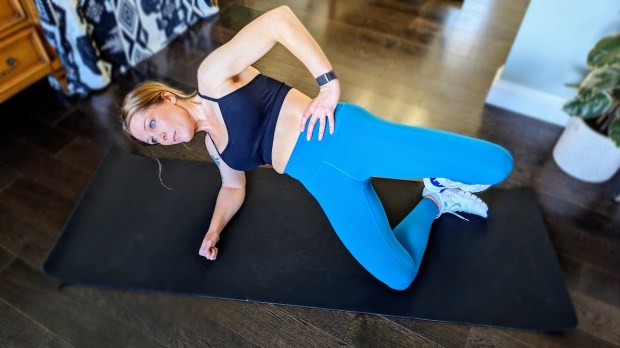
- Lie on your right side with your feet stacked and your right elbow under your right shoulder, forearm along the floor.
- Bend your knees so that your feet are behind you.
- Press through your right forearm and lift your body up so that you’re balancing on your right forearm and knee.
- Put your left hand on your hip.
- Squeeze your glutes to raise your top knee toward the ceiling.
- Raise your knee as high as you can without letting your pelvis rock forward or backward.
- Slowly lower your top knee back to the starting position.
- Lower hips down to the floor.
- Repeat all reps on one side before switching to the other.
Your glutes and hip muscles should be the primary muscles engaged during this exercise, but your core and shoulder muscles will also be active. Make sure you lift your hips off the ground and rotate your knee upward in a single, smooth movement.
3. Walking lunge
Walking lunges are a must for any glute-building program. They involve continuously moving forward with each step, which can really challenge your glutes through a full range of motion and provide deep muscle engagement and stretch.
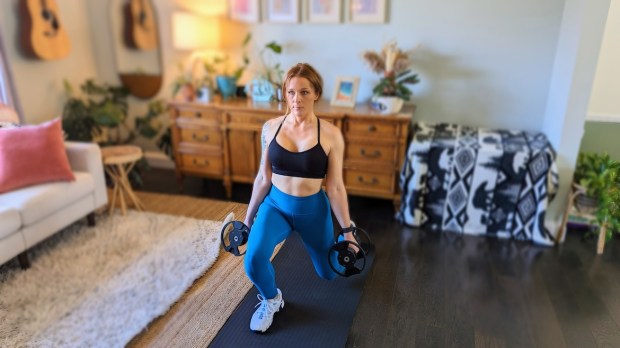
- Stand with your feet hip-width apart, holding dumbbells by your sides, palms facing in toward your body.
- Take a long step forward with your right leg and keep your core engaged. The longer the step, the more you’ll engage your glutes. Keep your torso upright or lean forward slightly—whichever position is most comfortable for you.
- Lower your body toward the floor by bending both knees until your back knee nearly touches the ground. Your front thigh should be parallel to the ground and your back knee should be aligned under your hips.
- Push through the heel of your front foot to lift yourself back up to the starting position.
- Step forward with the opposite leg and repeat the movement, walking forward as you lunge.
Take longer steps to increase the stretch on the glutes of your front leg. Focus on placing more weight on your front leg, which should bear the majority of the load. Aim for higher rep ranges (15 to 25 reps) with moderate to slightly heavy weights for this exercise. You don’t want to go too heavy or have too few reps because you’ll want the benefit of time under tension in your glutes for better muscle growth and glute engagement.
4. Reverse lunge
With reverse lunges, you step backward into the lunge instead of forward, which can reduce stress on the knee while still heavily targeting your glutes.
Reverse lunges tend to activate your glutes more than other lunge variations and focus less on your quadriceps, which are typically more engaged in traditional forward lunges.

- Stand with your feet hip-width apart, holding dumbbells by your sides, palms facing in toward your body.
- Take a large step back with your foot, placing the ball of that foot on the floor. Step back and slightly out to the side to keep balance.
- Bend both knees to lower your body toward the floor. Your front thigh should aim to be parallel to the ground, and your back knee should come close to the floor but not touch it.
- Engage your glutes and press through your front foot to return your back leg to the starting position.
- Repeat all reps on one side before switching to the other.
Make sure your legs stay hip-width apart, not lined up one foot behind the other. Taking a larger step back increases glute activation by increasing the stretch of the glute muscles. Make sure the step is big enough to feel your glutes engage but still maintain your balance and form.
5. Front-foot-elevated lunge
Elevating your front foot increases the range of motions, stretch, and activation of the glutes on the elevated leg. The higher the platform, the greater the stretch and challenge for the glutes. (But keep it safe and don’t go too high that you can’t focus on the movement and the glute activation!)
A platform a few inches to a foot off the ground is ideal, but use a height that works for you (depending on your level of flexibility, leg length, and comfort).
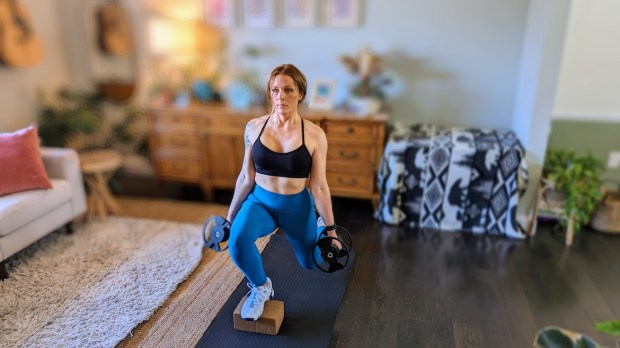
- Place a sturdy step or platform in front of you.
- Stand in front of the platform with your feet hip-width apart, holding dumbbells by your sides, palms facing in toward your body.
- Step your right foot onto the platform, keeping your back foot on the ground.
- Shift your weight forward onto your front leg and bend your front knee, lowering your body down while keeping your back straight and your chest up.
- Continue lowering until your back knee almost touches the ground (or tap the ground if it’s comfortable). Keep your front knee aligned with your ankle.
- Push through the heel of your front foot, contracting your glutes to raise back up to the starting position.
- Repeat all reps on one side before switching to the other.
It’s totally fine for your front knee to track over your toes if that’s what works for your anatomy. Focus on using your front leg to do most of the work. Try to minimize the push from your back foot, except for balancing. Concentrate on feeling the glutes of your front leg throughout the movement. The deeper you go in the lunge, the more you can activate the glutes, but don’t strain your knee or hip by overdoing it.
FAQ
1. Can I build glutes without hip thrusts?
Yes, there are many other exercises that work your glutes—some of which may even be more effective for muscle building. Check them out above!
2. Can squats replace hip thrusts?
If you already have well developed glutes, squats could be a replacement exercise. But hip thrusts are particularly useful for developing your mind-muscle connection and activating your glutes, which can help make other glute exercises more effective.
3. Are hip thrusts necessary in my workout routine?
Arguably nothing is necessary in a workout routine. But it can be a great option if you’re specifically looking to target your glutes.
What's Your Reaction?








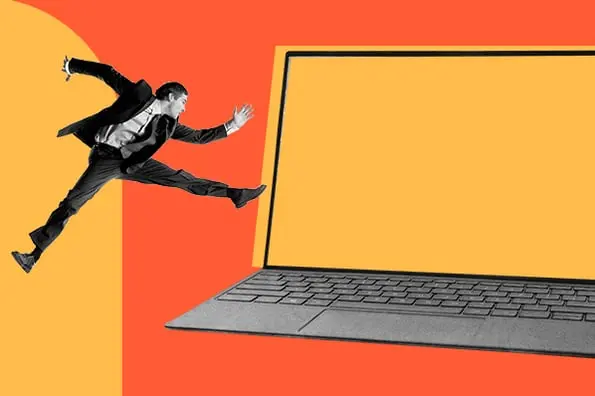

![The Usability Testing Playbook [Expert Tips & Sample Questions]](https://www.hubspot.com/hubfs/usability-testing-1-20250305-3357250.webp)








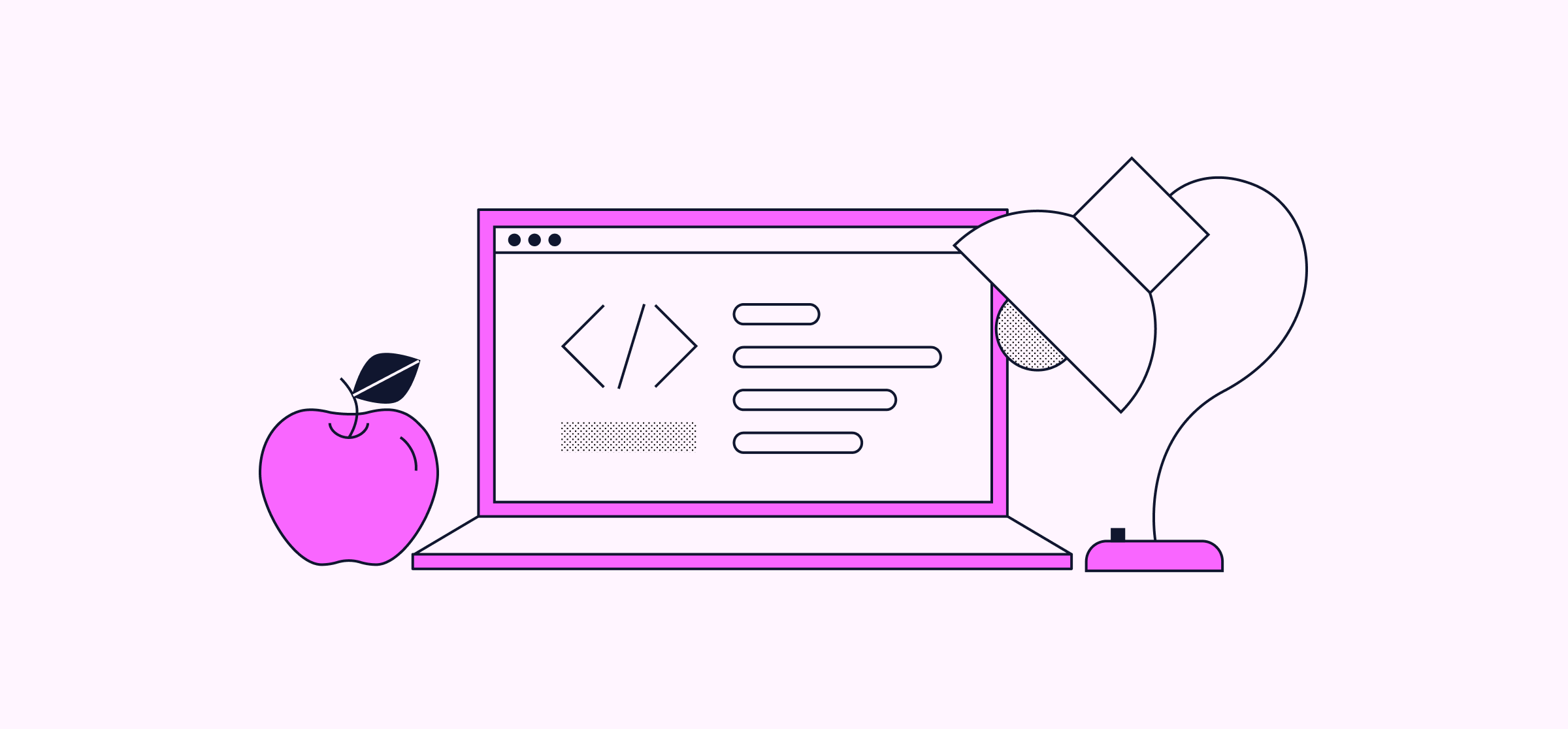





















.png)

















